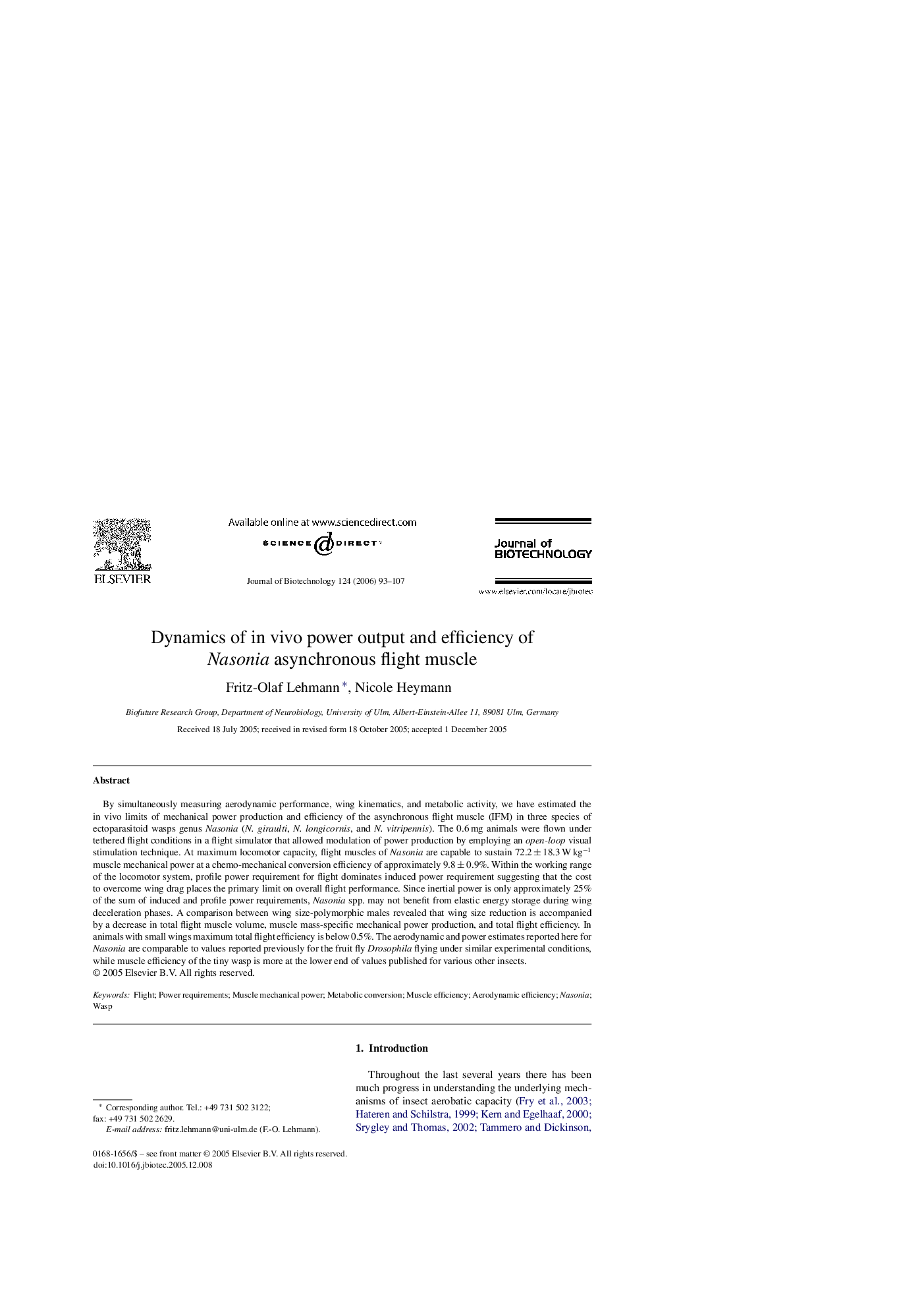| Article ID | Journal | Published Year | Pages | File Type |
|---|---|---|---|---|
| 25439 | Journal of Biotechnology | 2006 | 15 Pages |
By simultaneously measuring aerodynamic performance, wing kinematics, and metabolic activity, we have estimated the in vivo limits of mechanical power production and efficiency of the asynchronous flight muscle (IFM) in three species of ectoparasitoid wasps genus Nasonia (N. giraulti, N. longicornis, and N. vitripennis). The 0.6 mg animals were flown under tethered flight conditions in a flight simulator that allowed modulation of power production by employing an open-loop visual stimulation technique. At maximum locomotor capacity, flight muscles of Nasonia are capable to sustain 72.2 ± 18.3 W kg−1 muscle mechanical power at a chemo-mechanical conversion efficiency of approximately 9.8 ± 0.9%. Within the working range of the locomotor system, profile power requirement for flight dominates induced power requirement suggesting that the cost to overcome wing drag places the primary limit on overall flight performance. Since inertial power is only approximately 25% of the sum of induced and profile power requirements, Nasonia spp. may not benefit from elastic energy storage during wing deceleration phases. A comparison between wing size-polymorphic males revealed that wing size reduction is accompanied by a decrease in total flight muscle volume, muscle mass-specific mechanical power production, and total flight efficiency. In animals with small wings maximum total flight efficiency is below 0.5%. The aerodynamic and power estimates reported here for Nasonia are comparable to values reported previously for the fruit fly Drosophila flying under similar experimental conditions, while muscle efficiency of the tiny wasp is more at the lower end of values published for various other insects.
